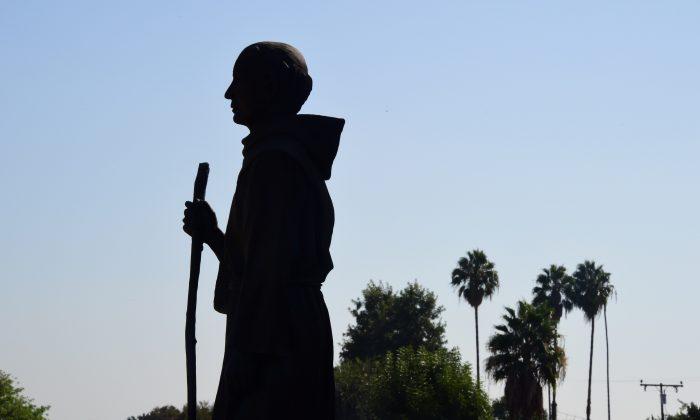LOS ANGELES—City officials announced on Oct. 11 that Father Junipero Serra’s name would be removed from a downtown park near Union Station for Indigenous People’s Day.
The city of Los Angeles replaced Columbus Day with Indigenous People’s Day in 2017.
Serra was a Catholic priest from Spain who established California’s mission system and sought to baptize Native Americans.
His sainthood in 2015 was protested by Native Americans, citing that indigenous people were brutalized, beaten, and forced into labor for the missions.
“Los Angeles is a city of belonging that takes responsibility for the mistakes we’ve made in the past,'‘ Mayor Eric Garcetti said. “Our indigenous brothers and sisters deserve justice, and today we take a step toward delivering both greater cultural sensitivity and spaces for Angelenos to gather and perform their traditional ceremonies.’’
There are 160,000 members of the American Indian and Alaska Native communities in Los Angeles, the most of any urban area in the nation, according to a motion that Los Angeles City Councilman Mitch O'Farrell introduced in June.
O’Farrell’s motion was the first step in the city issuing a formal apology to its indigenous communities.
“All land is indigenous,” said O'Farrell, who is a member of the Wyandotte Nation. “With the Indigenous Land Initiative, for the first time ever, we are putting Native American communities at the center of decision-making on issues related to our history and our future.”
The park will be called La Plaza Park until a new name is officially adopted.
The city will also work to establish parks for Indigenous celebrations downtown and citywide, officials said.
One such park—called The Indigenous Cultural Easement—was recommended by what’s known as “The Civic Memory Working Group,” which Garcetti convened in November 2019.





